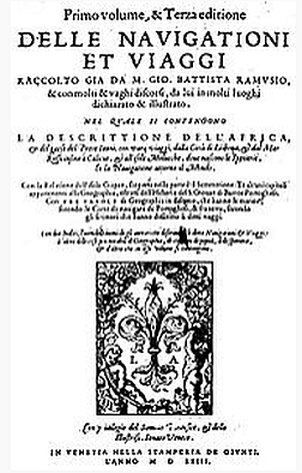This continues my reply to Forum member Miss Mae regarding the trouble she and her friends encountered owing to the revisionist narratives of the 15th century European writers Maximillanus Transylvanus and Giovanni Battista Ramusio about Ferdinand Magellan’s sojourn in the Philippine archipelago in 1521.
Sometime in 1525, the first printed version of Antonio Pigafetta’s chronicles of the Magellanic voyage appeared in Paris. It was a French translation that was credited by its publisher Simon de Colines as a French extract by Jacques Antoine Fabre from Pigafetta’s original manuscript in Italian. Pigafetta had furnished the Queen Regent of France, Margaret of Savoy, a copy of that Italian manuscript, and she had commissioned Fabre to translate it into French.


History scholars deemed that French translation as “incomplete and inaccurate,” “not very good,” and a “pirate edition” because it neither gave formal credit to its author nor to its translator. Indeed, the professor emeritus of history Charles E. Nowell (1904–1984) observed after reading it that “as it does not bear the name of the author, we are safe in saying that Pigafetta had nothing to do with it.”
Still, that French text of Pigafetta’s chronicles based on Fabre’s extract from the original Italian would inform all of its subsequent adaptations and translations until the 18th century. After its appearance in Paris, however, someone anonymously retranslated it back into Italian with abridgment—he was presumed to be Giovanni Batistta Ramusio himself but he neither denied nor admitted it—and it was printed as
“Il Viaggio fatto dagli Spagnivoli” in Venice in 1536.
ANONYMOUS TRANSLATION. In 1525 a French translation of Antonio Pigafetta’s chronicles of the Magellanic voyage (left facsimile) appeared in Paris without any author or translator credit, with its publisher Simon de Colines identifying it only as a French extract by Jacques Antoine Fabre from Pigafetta’s original manuscript in Italian. In the intervening years, someone anonymously retranslated it back into Italian with abridgment and it was printed (right facsimile) as “Il Viaggio fatto dagli Spagnivoli” in Venice in 1536.
Only in the 1563 edition of that book or 27 years later did Ramusio acknowledge that he was one who did that 1536 Italian retranslation. He explained that he was constrained to retranslate Pigafetta’s chronicles back into Italian because his first Italian translation was based on Fabre’s incomplete French translation that provided just a brief summary of the Magellanic voyage story. Ramusio did restore the first Holy Mass episode in Pigafetta’s chronicles but instead of being celebrated in the island of Mazaua, he unilaterally moved it to the “island of Butuan” on March 31, 1521.
From that point onward, Ramusio in his retranslation vastly reconfigured the itinerary of Magellan’s fleet, making it sail for Cebu passing “Zeilon, Bohol, Messana...” This was a radical departure from Pigafetta’s eyewitness account of Magellan’s sojourn in the Philippine archipelago that ended in the captain-general’s violent death in the Battle of Mactan on April 27, 1521.
By that time in the 15th century Ramusio was totally all by himself on the matter, with practically all of those who had a direct participation or involvement in the shaping of the Magellanic narrative no longer around—Peter Martyr d’Anghierra died in 1526, Pigafetta in 1534, Maximilianus Transylvanus in 1538, and Transylvanus’ staunch sponsor Cardinal and Prince-Archbishop Mathaus Lang von Wellenburg in 1540. (Ramusio, who lived seven more years to the ripe age of 72, died in 1557.)
Did Ramusio ever become aware that he had seriously misread Pigafetta’s chronicles and had done great injustice to the latter’s eyewitness account of the Magellanic sojourn in the Philippine archipelago? Did Ramusio ever feel any guilt that his blatant revisionism towards Pigafetta’s chronicles would do great violence and confusion to Philippine and world history?
We may never find out for sure, but I think that despite whatever character flaws Ramusio might have had as a geographer and travel writer, something about his innate nobility of spirit showed in how he worded his remarkably passionate “Discourse on the journey made by the Spaniards around the world” in the 1550 edition of his
“Delle Navigationi et Viaggi,” vol. I, p. 346.
I will explain this insight in the third and final part of this column next week.
(Next:
Did the Mazaua First Mass historians ever talk to one another? - 3) September 23, 2021
This essay, 2064th of the series, appeared in the column “English Plain and Simple” by Jose A. Carillo in the Campus Press section of the September 23, 2021 Internet edition of The Manila Times
,© 2021 by the Manila Times Publishing Corp. All rights reserved. Read this article online in
The Manila Times:Did the First Mass historians ever talk to one another? - 2To listen to the audio version of this article, click the encircled double triangle logo in its online posting in
The Manila Times.